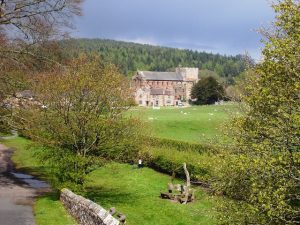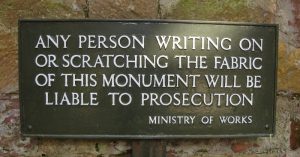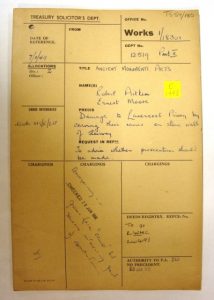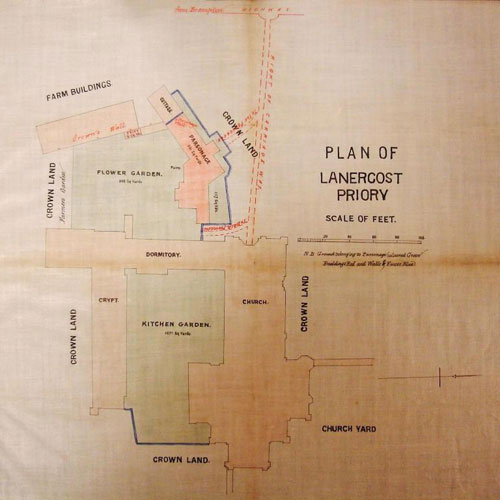
View of Lanercost Priory, Cumbria
I recently enjoyed a weekend away with some friends in Carlisle, in the north-west of England. One of the places that we visited was Lanercost Priory, about 13 miles (21 km) east of the city. Once an important medieval religious community, the priory was dissolved under King Henry VIII. Part of the building has been restored for use as a parish church and the ruins of the rest are preserved by English Heritage as a historic monument.

No graffiti, please
I was particularly struck by a sign on one of the walls warning visitors not to write on or scratch the stonework. The Ministry of Works, which put up the sign, was a government department that used to be responsible for both modern government buildings and historic buildings in the government’s care [ref] 1. One of the difficult things about finding and using 20th century records is that some government departments changed their names and areas of responsibility several times. The Ministry of Works only existed under that name between 1943 and 1962, although earlier and later Works departments existed with slightly different names. [/ref].

File cover for TS 59/180

Hand-drawn plan of Lanercost Priory and the adjoining parsonage, dated 1869 (document reference MFC 1/173/2)
Of course, I’ve only tried a couple of quick searches, and not all of my search results turned out to be relevant or of interest to me personally. As some of the descriptions in the Discovery catalogue are much more detailed than others, I’m sure that I haven’t identified all the records at The National Archives that relate to Lanercost Priory either. In fact, although I’ve made quite a good start, I’ve probably only scratched the surface [ref] 3. Sorry this is such a bad joke. I’m an archivist, not a comedian. [/ref].
What next? If you’re interested in finding out about the history of a place, you can:
Start your research by browsing our research guidance
Search our Discovery catalogue to find records held at The National Archives, or use one of our search tools for finding records in other archives
Try our new, experimental Collections on a map feature
Elsewhere on the web:
Search the English Heritage Archives catalogue
Learn about how to research Britain’s built heritage on the Building History website
Look up a place on the Vision of Britain through Time website